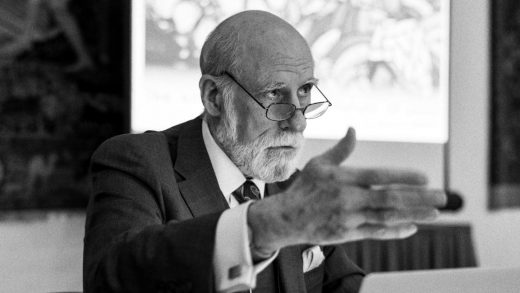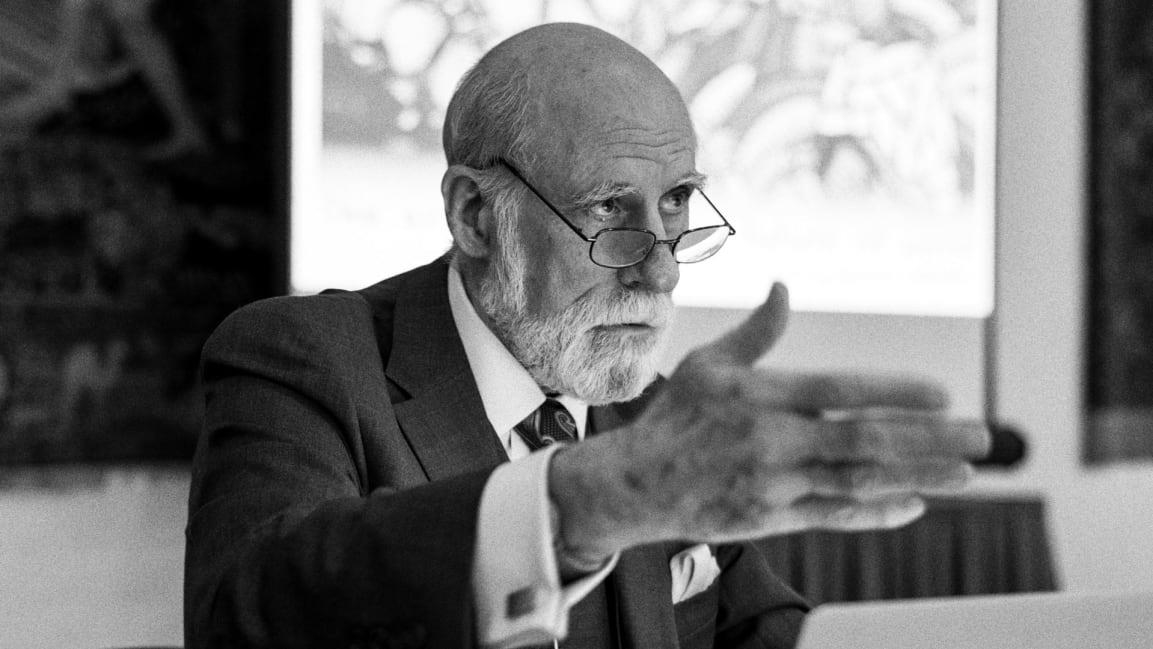This ‘father of the internet’ still isn’t completely sold on 5G
Few living people know more about connectivity than Vint Cerf, who has long been celebrated as one of the fathers of the internet. The core Internet Protocol and Transmission Control Protocol frameworks he cowrote in the 1970s remain essential infrastructure on today’s net. So the latest round of 5G hype is just a bit less likely to wow him.
On Thursday, I sat down with the internet pioneer after he’d spoken on a panel about high-speed connectivity at the Broadband Communities conference in Alexandria, Virginia. In our talk—two days after the 50th anniversary of the first transmission on ARPANET, the Defense Department-funded network that became a precursor to today’s internet—Cerf warned against expecting too much from the fastest flavors of 5G.
An edited transcript of our conversation follows.
Fast Company: First question, 5G as a broadband alternative for homes and businesses. You sounded a little down on that in your panel.
Vint Cerf: It’s only because I’m worried about 6 gigahertz versus 28 gigahertz. The studies that have been done from the DoD show the 28 gigahertz is very costly, still requires a great deal of fiber interconnect, and might put us in a poor competitive position with regard to serving the rest of the world.
FC: Because no one else is using millimeter wave. [U.S. 5G service also employs mm-wave spectrum in a 39 GHz band.] What about 6 GHz and under?
VC: That can give you a pretty significant capacity. With reasonable signaling mechanisms, we’re talking about gigabits per second.
FC: What is the potential for connected devices? Like, say, the connected wine cellar you described in a talk in D.C. in 2016?
VC: I do have RFID tags on the wine bottles, so that I can do inventory by just walking through the wine cellar.
Coming back to IoT [internet of things], in general, having a large address space is important. IPv6 [Internet Protocol version 6, an in-progress upgrade to the addressing system Cerf helped design] is actually very important for a lot of those applications.
FC: You’ve estimated a trillion connected devices by 2036. Is that still your forecast?
VC: You know, I’ve given up trying to figure out how many people were going to stick chips in everything, because they keep showing up. It’s remarkable how much computing capacity you either are wearing or sitting in, in the car or surrounded at home.
By the way, not every device needs to talk to all trillion other devices. What we don’t want is everybody in the world getting access to your webcam.
FC: We’ve figured out how to do that, just not intentionally.
VC: Robustness is very important. Rapid recovery is also important. I don’t want to get into the gold-plating problem, where you try to design and build a system that’s robust against everything you can think of—as opposed to resilient but also rapidly reconstitutable.
Which, by the way, we don’t have in our power generation and distribution system right now.
FC: I was just at a panel about 5G possibilities (November 08, 2019). And of course, they led off with examples of self driving cars and robot surgeons. Are those actually good use cases for 5G?
VC: I don’t think that’s a great use case for 5G. I just took a ride in one of Google’s Waymo cars in Chandler. Arizona, and it was a really interesting experience. [Cerf has been a Google VP and senior internet evangelist since 2005.] I had several people in the car with me, including an emergency backup driver just in case—and she didn’t have to do anything.
FC: I remember them telling me their system is designed to work completely offline.
VC: We do two things. We have incredibly detailed maps that are available on board, more detail than what you would have in even today’s Google Maps. And then there’s all the sensor data that gets processed locally.
FC: Are there any sort of IoT advances that you think will be made possible by 5G that we just can’t do today, whether it’s because 4G LTE needs too much power or the latency is too much of a problem?
VC: The power issue is quite real, because an IoT device that needs connectivity all the time for some reason—if it’s a monitoring system, for example, constantly reporting—then low power is really important. And so it doesn’t matter whether it’s 5G or something else. What matters is that the power be as low as possible.
When I think about health monitoring, for example, that’s the first thing I think. I don’t see 5G being necessarily the solution to everything, for the same reason I don’t think bitcoin and blockchain are the solutions to everything either.
FC: Now we’re buzzword compliant.
(33)



